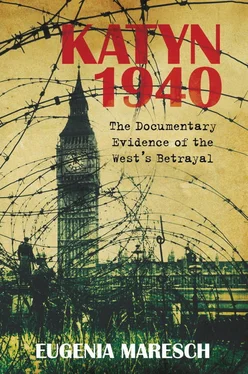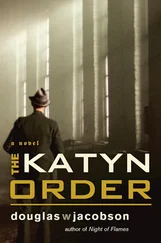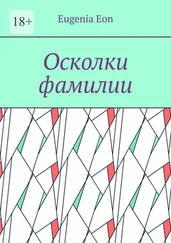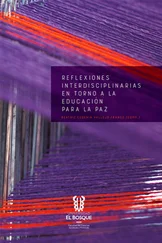Accordingly, up to 30th April 1943, 982 bodies were exhumed, of which approximately 70 per cent have been identified, while papers found on others must first be subjected to careful preliminary treatment before they can be used for identification. Bodies exhumed prior to the commission’s arrival were all inspected, and a considerable number were dissected by Professor Buhty [Buhtz] and his assistants. Up to today seven mass graves have been opened, the biggest of which is estimated to contain the bodies of 2,000 Polish officers. Members of the Commission personally dissected nine corpses and submitted numerous specially selected cases to post-mortem.
In all cases, bullets entered the nape. In the majority of cases only one bullet was fired. Two bullets were fired only rarely and only one case was found where three bullets had been fired into the nape. All the bullets were fired from pistols of less than 8 mm calibre. The spot where the bullets penetrated leads to the assumption that the shot was fired with the muzzle pressed against the nape or from the closest range. The surprising regularity of the wounds…permits the assumption that experienced hands fired shots. Numerous bodies revealed a similar method of tying the hands; and in some cases stabs from four-edged bayonets were found on bodies and clothes. The method of tying is similar to that found on the bodies of Russian civilians that were earlier exhumed in Katyn Forest. The assumption is justified that a ricocheted bullet first killed one officer, then went into the body of one already dead in the pit – the shootings apparently being made in ditches to avoid having the bodies transported to graves.
The mass graves are situated in clearings in the forest, the ground being completely levelled off and planted with young pines. The mass graves were dug in undulating terrain, which consists of pure sand in terraces, the lowest going down as far as the ground water. Bodies lay, practically without exception, face down, closely side by side and in layers one above the other, clearly ledged methodically at the sides of pits and more irregularly in the centre.
The uniforms of the exhumed bodies, according to the unanimous opinion of the commission, were, especially with regard to buttons, rank insignia, decorations, form of boots, etc., undoubtedly Polish. They had winter wear. Frequently furs, leather coats, knitted vests and typical Polish officers’ caps have been found. Only a few bodies were those of other ranks. One body was that of a priest. The measurements of the clothes correspond with the measurements of the wearer. No watches or rings were found on the bodies, although from the exact date and time found in entries in several diaries, the owners must have had these objects up to their last days, even hours. Comments found on bodies – diaries, correspondence, newspapers are from the period of the autumn of 1939 to March and April 1940.The last hitherto established date is that of a Russian newspaper of 22 April 1940.
There were varying degrees of decomposition of the bodies, differing according to the position of the bodies within the grave and their juxtaposition to each other. A large number of skulls were examined for changes, which according to the experiences of Professor Orsoa [Orsós], are of great importance for the determination of the time of death. These changes consisted of various layers of calcareous tuft-like incrustation on the surface of the already loamy brain matter. Such changes are not to be observed on bodies that have been interred for less than three years. But this change was observed to a marked degree on the skull of the body No. 526, which was found with a surface layer in one big mass grave.
Second Secretary Denis Allen’s Opinion
[…] This is useful, and the material is skilfully assembled. On the evidence available it is, I think not difficult to share his conclusion that at any rate a strong presumption exists that the Russians were responsible. In the next five paragraphs, Mr O’Malley embarks upon what he admits is a ‘sometimes partial and obviously defective’ reconstruction of what may have happened at Katyn, leading up to a final ghoulish vision of Stalin condemning the Poles to the knacker’s yard. This passage seems to serve no other purpose than to arouse anti-Soviet passions and prejudices in the reader’s mind. Mr O’Malley then applies himself to the question of how such passions and prejudices may best be turned to account. By way of a devious argument about the infiltration of morals into international politics he recommends, while recognising the present necessity of avoiding public accusations of our Russian Allies, that we should at least redress the balance in our own minds and in all our future dealings with the Soviet Government, refuse to forget the Soviet crime of Katyn. Our future dealings with the Russians should in fact be governed by the moral necessity of ‘vindicating the spirit of those brave, unlucky men and justifying the living to the dead’. In effect, Mr O’Malley urges that we should follow the example, which the Poles themselves are unhappily so prone to offer us and in our diplomacy allow our heads to be governed by our hearts. The minutes on Mr O’Malley’s earlier despatch suggest that this is the one thing above all to be avoided at any rate in our dealings with Soviet Russia.
Frank Roberts agreed with Allen’s scrutiny of the despatch and added that it was an awkward matter when an ally such as Russia was opened to accusations of this kind. According to him, to improve the conduct of the Soviets, there was nothing else to do but to aim at improving Anglo-Soviet relations. However, he was for the distribution of O’Malley’s despatch to the King and War Cabinet, selected paragraphs 1 to 13 only, adding: ‘I cannot help feeling that subsequent imaginative reconstruction of the scene in paragraphs 14 to 17, and more particularly paragraph 17, and moral observations in paragraphs 19 to 24 cast very little light upon this problem and merely leaves the reader with the impression that Mr O’Malley is working up the maximum prejudice against the Soviet Union.’ Sir William Strang and Sir Orme Sargent were for the uncut version. As should be clear to all, points 18 to 21 were truly remarkable and carried straightforward arguments. Significantly, O’ Malley’s implicit proposal of a scientific test of ‘Russian veracity’ at point 16, was nowhere remarked upon by any other FO analyst, until pounced upon in his usual inimitable style by Winston Churchill.
Sir Alexander Cadogan, Permanent Under Secretary of State, a quintessential diplomat, expressed his thoughts pragmatically. He knew that the evidence could not possibly change Britain’s course of action or policy; but here is no doubt the moral side of the report affected him profoundly:
Sir Alexander Cadogan’s Remarks
This is very disturbing. I confess that in cowardly fashion, I had rather turned my head away from the scene at Katyn – for fear of what I should find there.
There may be evidence that we do not know of, that may point in another direction. But on the evidence that we have, it is difficult to escape from the presumption of Russian guilt.
This of course raises terrible problems, but I think no one has pointed out that on the purely moral plane, these are not new. How many thousands of its own citizens has the Soviet regime butchered? And I don’t know that the blood of a Pole cries louder to Heaven than that of a Russian. But we have perforce welcomed the Russians as Allies and have set ourselves to work with them in war and peace.
The ominous thing about this incident is the ultimate political repercussion. How, if Russian crime is established, can we expect Poles to live amicably, side by side with Russians for generations to come? I fear there is no answer to that question. The other disturbing thought is that we may eventually, by agreement and in collaboration with Russians, proceed to the trial and perhaps execution of Axis ‘war criminals’ while condemning this atrocity. I confess I shall find that extremely difficult to swallow.
Читать дальше












